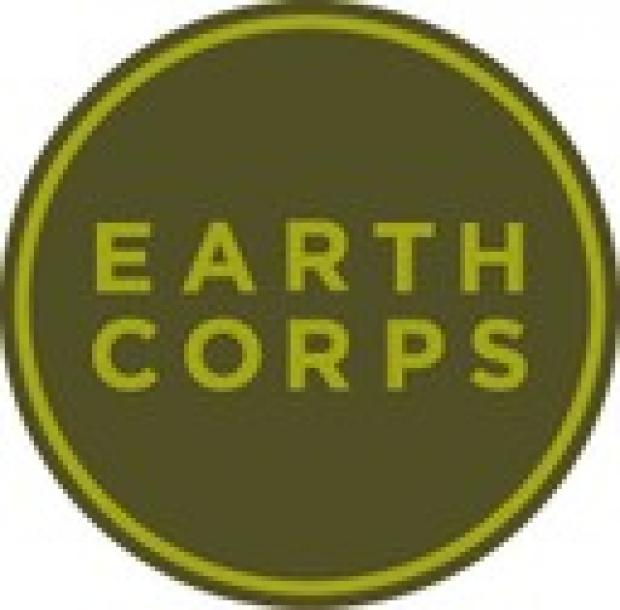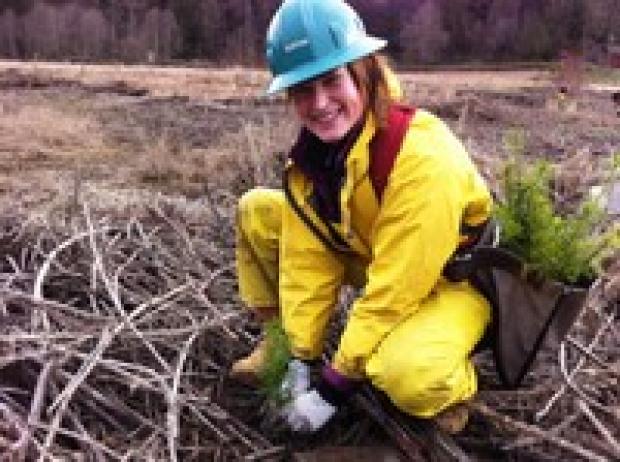
EarthCorps builds a global community of leaders through local environmental service. Our programs develop the skills of emerging environmental leaders from across the United States and 80 other countries around the world, and engage 10,000 volunteers in projects that restore natural areas around the Puget Sound region. Since 1993, EarthCorps crews and volunteers have installed more than 1 million trees. Our biocarbon innovations so far revolve around restoring urban forests and coastal wetlands, and quantifying the ecosystem value of these natural areas.
Forests

Forests in city parks deliver huge value. In Seattle, they take up just 7% of the urban landscape, but contain 20% of the city’s trees. They provide $23 million dollars worth of services including stormwater retention, pollution filtration, and carbon sequestration.
As part of our participation in the Green Seattle Partnership and the Green Cities Partnerships to restore urban forests in western Washington, EarthCorps has pioneered a citizen science effort called the Forest Monitoring Team. EarthCorps ecologists have trained and mentored 250 citizen scientists. They collect baseline data about urban forests, including how much carbon is currently stored in forest plants and soils. So far, the team has established more than 200 permanent monitoring plots in Seattle, as well as plots in Kent, Kirkland, Redmond and Tacoma. The goal is to use this data to increase the ecosystem value of urban forests.
Coastal Wetlands - Blue Carbon
Through our partnership with Restore Americas Estuaries (RAE) and ESA-PWA, EarthCorps is developing new incentives, both market-based and policy-based, for conservation and restoration of tidal wetlands. With funding provided by NOAA’s Office of Habitat Conservation, RAE, ESA-PWA, and EarthCorps are assessing the potential impact and benefits of coastal blue carbon for achieving restoration priorities.
Research focusing on “Blue Carbon” in coastal wetland ecosystems suggests that coastal wetlands sequester carbon at rates 3-5 times greater than temperate forests, and are significant stores of soil carbon, accumulated over centuries and millennia. In addition, some tidal marshes also have the potential to reduce emissions of other greenhouse gases, like methane. Unfortunately, coastal wetlands are being lost globally at an unsustainable rate estimated at one to three percent per year.
In October 2012, Verified Carbon Standard (VCS) approved the initiative led by RAE to create a project category for measuring and crediting climate benefits from a broad range of wetlands, including mangroves, freshwater tidal coastal wetlands, salt marshes, seagrasses, floodplains, peatlands, and other wetland types. VCS is the leader in the voluntary carbon market with a 58 percent global and U.S. share.
EarthCorps’ Coastal Blue Carbon project in the Snohomish River delta is the first in a nationwide effort to develop protocols for greenhouse gas sequestration through tidal wetland habitat restoration. The Snohomish River delta and estuary is ideal because it contains the full spectrum of wetland types in one watershed, and has a suite of shovel-ready restoration projects. This initial project will result in site-specific, field-verified carbon values, and begin developing the methodology required to enroll coastal wetland projects in carbon markets.

Give for a brighter future
Connect
Join our email list to learn about what we do and how to get involved.